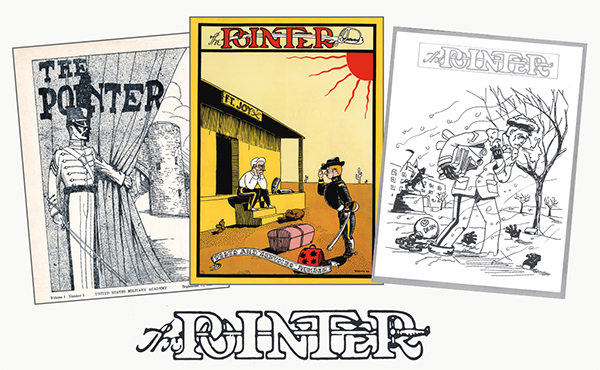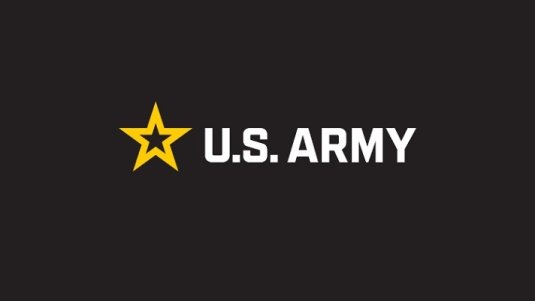By Jenn Voigtschild ’93
One hundred years ago, on September 15, 1923, the very first issue of The Pointer was published and disseminated to the Corps of Cadets. Today, only half of West Point’s 55,000-plus living graduates read The Pointer as a cadet because its last issue was printed in Academic Year 1996. Before 1923, the Howitzer contained many samples of cadet creativity in both the written word and visual art.
After an opening letter by General of the Armies John J. Pershing, Class of 1886, Brigadier General Fred W. Sladen, Class of 1890, the Superintendent at that time, introduced The Pointer by stating, “We should foster in the student body a legitimate self-expression which is not only an academic need, but which will later be an asset of great worth in carrying out the new and larger aims of our army. And in imposing on the editorial staff the obligation of employing their utmost ingenuity and originality in accomplishing an unfamiliar task, we are surely training them for the severer tests of the same kind which will many times confront them in their chosen profession.” Sladen’s words proved prescient, and decades later The Pointer was still displaying the ingenuity and originality of the Corps of Cadets on a bi-weekly, then monthly, basis.
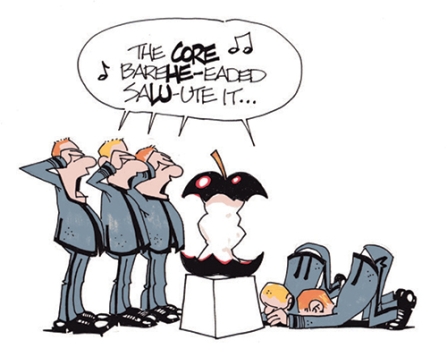
The first issues of the magazine were a blend of newspaper, literary journal, and satire mediums. Summer training, updates on athletic teams, photographs and Academy news were interspersed with poems, plays, ditties, comics, and jokes. For decades, The Pointer had themed issues throughout the academic year. There was an Army-Navy issue, summer furlough, rings, cars, “femmes,” and sometimes even an annual issue compiled by Old Grads. The 1939 brochure “West Point: A Brief Sketch” stated, “Behind the gray walls of West Point all is not stern discipline, cadets do not study in full dress coats, nor plebes sleep at attention,” and then highlighted the 16-year-old magazine as an example of cadet entertainment, noting that it “has several times won high places in competition with other college magazines.”
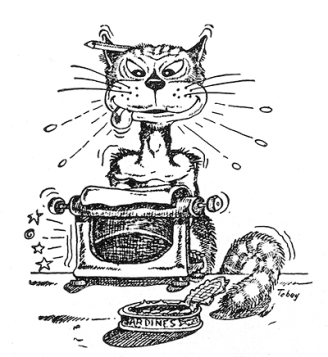
By the 1970s, issues were themed according to brainstorming sessions, and the submissions gathered by the editorial staff and most “news” were located in other places, including the Pointer View’s four-page Slum and Gravy section, which was edited by another club within the Corps of Cadets (The Pointer and Pointer View are two completely different publications; the Pointer View was the weekly newspaper produced by the Public Affairs Office of USMA). The Pointer was much more than satiric articles and witty cartoons: It was a business endeavor that sold advertisements to local and national brands, and most issues were comprised of roughly 40 percent advertisements. The staff also created and sold West Point calendars, cadet notecards (usually with a class crest on the front), and holiday greeting cards. Also standard in every issue was a commentary by Pyrene, the Washington Hall cadet mess cat and “head mouser,” who anonymously mused about and critiqued changes in the Corps, new rules and regulations, and lamented days gone by.
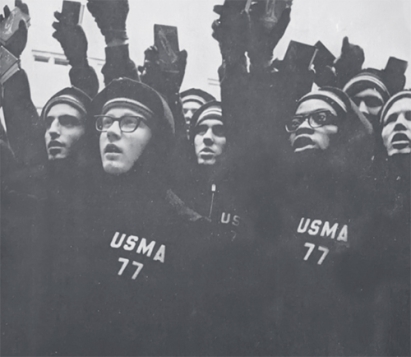
Cadets found a place on The Pointer staff in various ways; in most cases they were recruited by someone already on the staff who noticed an article, drawing or humorous work they had already completed. When queried, former editors and staff members fondly recalled their days bringing humor to the Corps, and their reminiscences (and artwork) could easily fill an entire issue. Here’s a brief sampling of memories from a few alumni of The Pointer:
Ray Andrews ’60: Inspired by cadet antics and my imagination, I submitted many cartoons to The Pointer in my plebe and yearling years but one cartoon about a mess hall area commander upset my company commander, and I was “put out of business.” I picked up cartooning again after my military service and published a significant amount of work, including 75 cartoons in the class 50th Reunion book.
Richard Bridges ’71: Most of our content was produced in-house, although sometimes current events generated articles. I remember when Ward Just (a noted war correspondent and journalist of the time) wrote a book about cadets and the military; I took him to task personally for inaccuracies. I got a nice letter from him, which we put in The Pointer, along with interviews with the cadets he interviewed for the article. My favorite drawing was by Gary Kirchberger ’71, the art editor, representing trout as symbols of our different kind of trousers: white trout, green trout, etc.
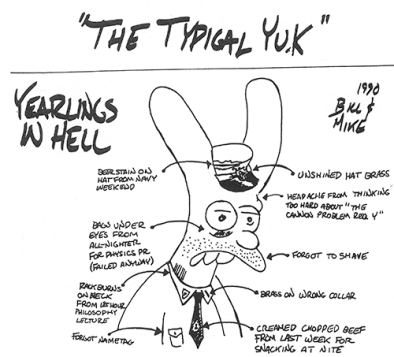
Mike Conrad ’80: My favorite aspect of working on The Pointer was that it was just plain fun! As editor in chief I had a staff of extremely talented writers, artists and journalists who all felt the same way, and we were able to brainstorm some pretty amazing stuff. Posing some of the photographs got us a lot of double-takes (especially parodies of some mainstream ads back then, notably the repeating ad “What kind of man reads The Pointer?”). We did not want to be a command-information organ, so our OIC wisely scheduled a meeting with the Commandant for one particular issue to show him what we were planning to publish and thereby head off any reprisals.
George Hegedus ’93: The Pointer was fun to put together. No software at that time, so we printed out articles and then I, as editor, literally cut and pasted them onto the layout pages with glue. Just the nature of what goes on in cadet life inspired the content—the stories Old Grads tell to this day. I was told “it’s a target-rich environment for humor.” Our cartoonists and writers were amazing, and I was glad we could compile “Cadets in Hell” into a special edition at the end of firstie year.
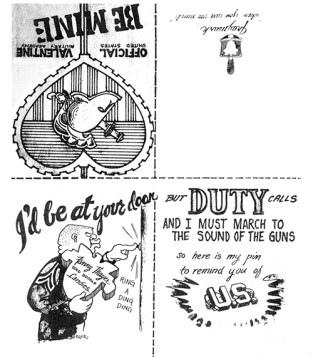
Mike Jason ’95: There I was, at the zenith of my mediocre cadet career, my first multi-page cartoon accepted by the infamous The Pointer magazine, only to witness its demise. My opus magnum, “Beavis and Butthead go to Airborne School” would never see the light of day; who knows where life might have taken me!
Sean M. Smith ’95: “Beavis and Butthead go to Airborne School” was, in fact, excellent.
Tom Kurkjian ’68: During Beast Barracks each year The Pointer made a presentation to the new class; it was the most remembered presentation of my Beast. When I was managing editor as a firstie, some of the underclassmen wanted to write about contemporary topics (like Vietnam and mandatory chapel) and the compromise was a detachable center section, then a stand-alone piece, known as the “Mandate” in 1967-68.
Amy (McDonald) Mulligan ’84: One of my best memories was traveling to New York City with everyone to go to the offices and studios of MAD magazine. That was what we modeled ourselves after back then. My favorite issue was a parody of GQ magazine, it was so much fun to shoot! As editor in chief, I was called into the Commandant’s office only twice.
Chuck Petruska ’68: I thoroughly enjoyed my time on The Pointer. I got involved with the business side of the magazine as a plebe when I was “drafted” by my platoon leader to hustle subscriptions…and was later asked to join the business staff. I stayed involved, to a great extent, because of my classmate John Calabro ’68, the “heart” of the magazine at the time.
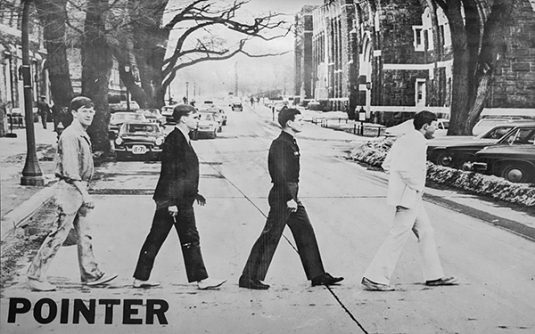
Gus Stafford ’81: The Pointer provided a welcome outlet for our creative abilities. It was a welcome distraction from academics and the duties of the day. We were largely unconstrained in what we produced—providing freedom in the midst of West Point’s strict military structure. We were able to poke irreverent fun at the administration, other cadets, and ourselves, all for the greater enjoyment of the Corps. When the magazines went out, the Corps dropped what they were doing and read them. Remember, we had no telephones (except those in the basement), no computers, and no TV except in the company day room…The Pointer had a corner on the entertainment market.
Charles Westenhoff ’74: My favorite product of my time as editor in chief was the 50th anniversary issue of The Pointer. In lieu of taking spring leave I spent one week working in the archive of The Pointer and assembled material from the 1920s to the 1970s. Most of our inspiration came from the absurdity of cadet life and the immense contrast with the outside world. One special issue we did was a send-up of China’s Cultural Revolution. It was titled “The People’s Pointer,” and we photographed cadets holding up their Bugle Notes in a parody of Mao’s Little Red Book.
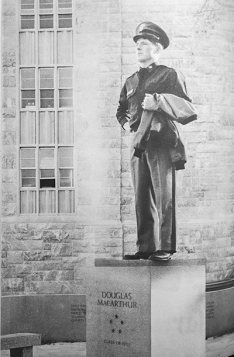
Sadly, the last issue of The Pointer was printed in spring 1996 after a couple years of extensive content editing by the powers that be, and there was only one advertiser to defray the cost of production. By this time, most of the literary submissions (poetry, short stories, and artwork) were incorporated into the Circle and the Spiral journal, which began in 1991. Barbara Maroney, DCA’s Publications Coordinator from 1988-2000, remarked that there were some really talented artists on the staff that did not have another outlet to showcase their work, both serious and satirical.
To fill the gap after The Pointer ceased publication, Mike Nemeth ’04 was well known for creating an underground satirical newsletter under the auspices of “Centerstall” during his time as a cadet. With the current prevalence of publishing software, photo manipulation, and social media, cadet humor can be created and transmitted almost instantaneously. The Commandant in 1923, Colonel Merch B. Stewart, Class of 1896, could not have foreseen changes in technology but did predict in the initial 1923 issue: “The Pointer assumes for itself a mission of more than immediate importance.” Mission accomplished. Thank you to The Pointer for brightening the gray of West Point!

